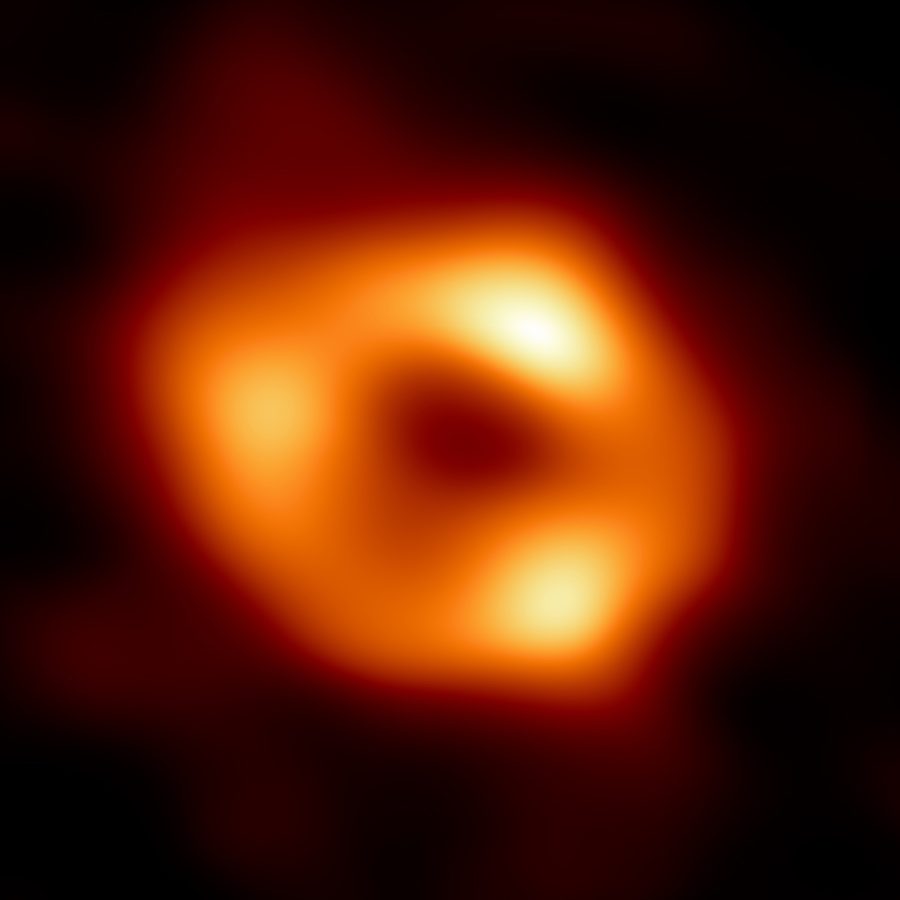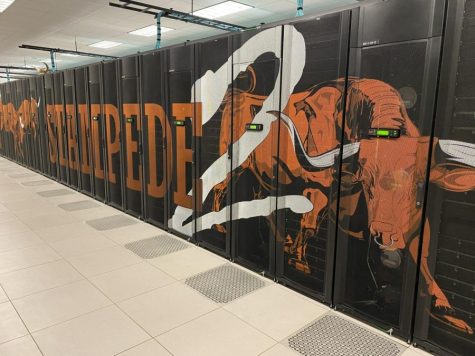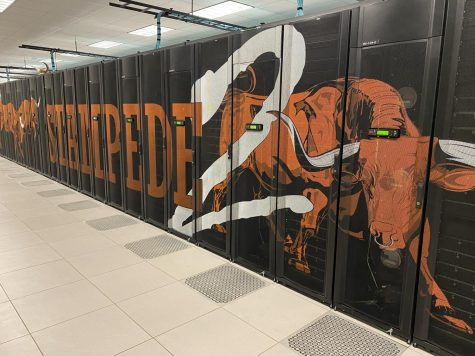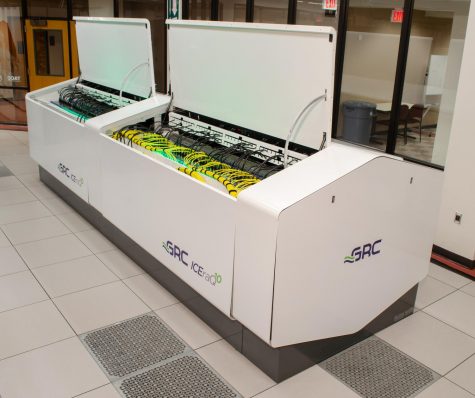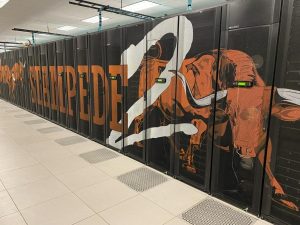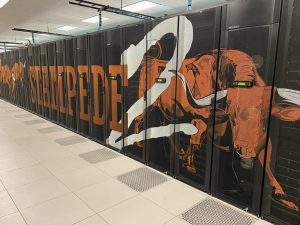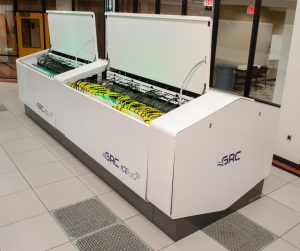UT-Austin supercomputer simulates first-ever image of black hole at center of our galaxy
June 16, 2022
Researchers used UT’s supercomputer to generate simulated images of Sagittarius A*, a supermassive black hole that potentially lays at the center of the Milky Way galaxy, a finding that provides stronger evidence of the black hole’s existence.
The study used the Frontera supercomputer to develop models of Sagittarius A* based on data collected from the Event Horizon Telescope. Charles Gammie, Willett chair in physics and professor of physics and astronomy at the University of Illinois Urbana-Champaign, said the researchers found persuasive evidence to suggest that there is a black hole at the center of the Milky Way.
“What we see in images of the black hole is not the black hole itself — we see light that’s radiated from the hot gas around the black hole,” Gammie said. “To really understand the source, you have to model that hot gas.”
Gammie and his team used measurements from telescopes to simulate images of what the black hole might look like. Lead researcher Chi-Kwan Chan said using Frontera was necessary to simulate the movement of hot gas around the black hole.
“Using a desktop computer is not powerful enough to capture all the events of the plasma interaction happening in the black hole,” said Chan, associate research professor of astronomy at the University of Arizona. “In order to capture (these) complicated physics, we need to use supercomputers.”
The study found that the black hole spins in the opposite direction of the Milky Way’s spin. Ben Prather, a graduate student at the University of Illinois Urbana-Champaign, said if researchers interpret the Milky Way as lying on a plane, some may expect the black hole to lie on the same plane. However, Prather said Sagittarius A* is slightly angled away from the plane of the galaxy.
Gammie said his team also used Frontera to calculate the strength of the black hole’s magnetic fields.
“It looks like in the galactic center, the fields are just strong enough that they’re about to pop out of the black hole,” Gammie said.
With new technology like the Event Horizon Telescope and UT’s Frontera supercomputer, Chan said scientists have raised new questions about the theory of black holes.
“We are finally at a point where there are things we cannot explain,” Chan said. “The observation is now good enough to challenge the theory, and that is the only way to push the physics forward.”

